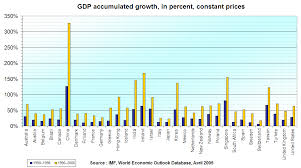Growth: The Key to Unlocking Your Full Potential
In life, growth is an essential and natural process that allows us to evolve, learn, and reach our full potential. Whether it’s personal growth, professional development, or emotional maturity, embracing growth opens doors to new opportunities and enriches our lives in countless ways.
Personal Growth:
Personal growth is a lifelong journey of self-discovery and self-improvement. It involves expanding our knowledge, developing new skills, and challenging ourselves to step outside of our comfort zones. By actively seeking personal growth, we can enhance our confidence, resilience, and overall well-being.
One important aspect of personal growth is setting goals. Goals provide direction and motivation for us to strive towards something meaningful. They help us focus our efforts and push past obstacles that may arise along the way. As we achieve these goals, we gain a sense of accomplishment and fulfillment that fuels further growth.
Professional Development:
In today’s fast-paced world, professional development is crucial for staying competitive in the job market and advancing our careers. Continuous learning and acquiring new skills are essential components of professional growth. Whether it’s attending workshops or seminars, pursuing higher education, or seeking mentorship opportunities, investing in professional development opens doors to new possibilities.
Moreover, embracing a growth mindset is vital in the workplace. A growth mindset recognizes that abilities can be developed through dedication and hard work. By adopting this mindset, we become more open to challenges and setbacks as opportunities for learning and improvement rather than as failures.
Emotional Maturity:
Emotional maturity is another aspect of growth that affects every aspect of our lives. It involves developing self-awareness, managing emotions effectively, building healthy relationships, and cultivating empathy towards others. Emotional maturity allows us to navigate life’s ups and downs with grace and resilience.
To foster emotional maturity, it’s important to engage in self-reflection regularly. Taking time to understand our emotions helps us identify patterns, triggers, and areas for personal growth. Additionally, seeking support from therapists or coaches can provide valuable insights and guidance in developing emotional intelligence.
Embracing Growth:
Embracing growth requires a mindset that embraces change and sees challenges as opportunities for growth. It involves stepping outside of our comfort zones, taking risks, and being open to new experiences. Growth may not always be easy or comfortable, but the rewards it brings are immeasurable.
Remember that growth is a continuous process. It’s important to celebrate small victories along the way and acknowledge the progress made. Surrounding ourselves with supportive individuals who encourage our growth can also make the journey more enjoyable and fulfilling.
In conclusion, growth is an integral part of our lives that allows us to unlock our full potential. By actively pursuing personal growth, investing in professional development, and cultivating emotional maturity, we can create a life filled with purpose, fulfillment, and success. So embrace growth wholeheartedly and watch as you flourish into the best version of yourself.
7 Essential Tips for Achieving Growth and Success
- Set achievable goals and objectives
- Focus on customer satisfaction
- Invest in marketing
- Leverage technology
- Take calculated risks
- Network & collaborate
- Stay organized & focused
Set achievable goals and objectives
Setting Achievable Goals and Objectives: The Path to Personal Growth
Setting goals is an essential step on the path to personal growth. However, it’s equally important to set achievable goals and objectives that align with our capabilities and aspirations. By doing so, we can create a clear roadmap for our growth journey and increase our chances of success.
When setting goals, it’s crucial to be realistic and consider our current circumstances. Setting overly ambitious or unrealistic goals can lead to frustration and demotivation if we continuously fall short of achieving them. On the other hand, setting achievable goals provides us with a sense of accomplishment and builds momentum for further growth.
To set achievable goals, start by assessing your strengths, weaknesses, and resources. Consider your current skillset, available time, and any limitations you may have. This self-awareness will help you identify areas where you can realistically make progress.
Once you have a clear understanding of your starting point, define specific objectives that are challenging yet attainable. Break down larger goals into smaller milestones or tasks that are easier to manage. This approach allows you to track your progress more effectively and make adjustments along the way if needed.
It’s also helpful to set deadlines for each objective. Having a timeframe creates a sense of urgency and helps prioritize tasks accordingly. However, ensure that the deadlines are reasonable and allow for flexibility when unexpected events arise.
Additionally, consider making your goals measurable. By defining specific metrics or criteria for success, you can objectively evaluate your progress. This not only provides clarity but also boosts motivation as you witness tangible results.
Lastly, remember that setting achievable goals doesn’t mean settling for mediocrity or avoiding challenges. It simply means being realistic about what you can accomplish within a given timeframe while pushing yourself outside of your comfort zone.
As you achieve each goal or objective, take time to celebrate your accomplishments before moving on to the next one. Acknowledging your progress reinforces positive habits and keeps you motivated to continue growing.
In conclusion, setting achievable goals and objectives is a vital tip for personal growth. By being realistic, breaking down larger goals, setting deadlines, and measuring progress, you can create a roadmap that propels you forward on your growth journey. So, start setting those achievable goals today and watch as you steadily transform into the best version of yourself.
Focus on customer satisfaction
Focus on Customer Satisfaction: The Key to Sustainable Growth
In today’s competitive business landscape, one tip that stands out for achieving sustainable growth is to prioritize customer satisfaction. Happy and satisfied customers not only become loyal advocates for your brand but also contribute significantly to your bottom line. By focusing on customer satisfaction, businesses can foster long-term success and build a strong foundation for growth.
Customer satisfaction goes beyond simply meeting the basic expectations of your customers. It involves creating exceptional experiences that exceed their needs and desires. When customers feel valued, heard, and appreciated, they are more likely to return and recommend your products or services to others.
To prioritize customer satisfaction, it’s crucial to understand their needs and preferences. This can be achieved through market research, surveys, feedback mechanisms, and direct communication channels. By gaining insights into what truly matters to your customers, you can tailor your offerings and improve the overall customer experience.
Consistency is another key factor in ensuring customer satisfaction. Customers expect a consistent level of quality and service every time they interact with your business. Whether it’s through prompt responses to inquiries, delivering products on time, or providing reliable after-sales support, consistency builds trust and fosters loyalty.
Empowering employees to deliver exceptional customer service is also essential. Well-trained and motivated employees who understand the importance of customer satisfaction can make a significant impact on the overall experience. Encourage a customer-centric culture within your organization by providing ongoing training opportunities, recognizing outstanding service, and empowering employees to resolve issues effectively.
Regularly measuring customer satisfaction through metrics such as Net Promoter Score (NPS), Customer Satisfaction Score (CSAT), or Customer Effort Score (CES) allows you to track progress and identify areas for improvement. Actively seeking feedback from customers demonstrates that their opinions matter and shows a commitment to continuously enhancing their experience.
Lastly, addressing customer complaints or concerns promptly is crucial in maintaining high levels of satisfaction. Responding with empathy, taking ownership of issues, and providing timely resolutions can turn a dissatisfied customer into a loyal advocate. It’s an opportunity to showcase your commitment to customer satisfaction and build trust in your brand.
In conclusion, focusing on customer satisfaction is a proven strategy for achieving sustainable growth. By understanding and meeting the needs of your customers, delivering consistent experiences, empowering employees, measuring satisfaction, and addressing concerns effectively, you can create a strong foundation for long-term success. Remember that satisfied customers not only drive repeat business but also become your most valuable ambassadors in driving new growth opportunities.
Invest in marketing
Invest in Marketing: Fueling Business Growth
In the dynamic and competitive world of business, investing in marketing is a crucial step towards achieving sustainable growth. Marketing serves as the fuel that propels your brand forward, reaching new customers, and expanding your reach. By strategically allocating resources to marketing efforts, businesses can effectively connect with their target audience and drive success.
Marketing is not just about promoting products or services; it encompasses a comprehensive set of strategies aimed at building brand awareness, establishing credibility, and fostering customer loyalty. Here are some key reasons why investing in marketing is essential for business growth:
- Increased Visibility: Effective marketing campaigns allow businesses to stand out from the crowd and capture the attention of potential customers. By utilizing various channels such as social media, search engine optimization (SEO), content marketing, and advertising, you can increase your visibility and attract more prospects to your brand.
- Targeted Reach: Marketing enables businesses to identify their target audience and tailor their messaging accordingly. By understanding customer demographics, preferences, and behaviors, you can create targeted campaigns that resonate with your ideal customers. This personalized approach helps attract quality leads who are more likely to convert into loyal customers.
- Brand Building: Investing in marketing helps build a strong brand identity that resonates with your target market. Consistent branding across all touchpoints creates recognition and trust among consumers. A well-defined brand image enhances customer loyalty and sets you apart from competitors.
- Customer Engagement: Effective marketing strategies foster meaningful engagement with customers throughout their journey. By leveraging social media platforms, email marketing campaigns, interactive content, and personalized experiences, you can nurture relationships with existing customers while attracting new ones. Engaged customers are more likely to become advocates for your brand and refer others.
- Competitive Advantage: In today’s crowded marketplace, staying ahead of the competition is crucial for sustained growth. Investing in marketing allows you to keep up with industry trends, monitor competitors’ strategies, and differentiate your offerings. By continuously refining your marketing efforts, you can position your business as a leader in the market.
- Measurable Results: Marketing efforts can be tracked and measured, providing valuable insights into their effectiveness. Utilizing analytics tools and metrics, businesses can evaluate the return on investment (ROI) of their marketing campaigns. This data-driven approach allows for optimization and refinement of strategies to maximize growth opportunities.
Investing in marketing is not a one-time expense but a continuous process that requires careful planning, execution, and adaptation. It is an investment in the long-term success of your business. Whether you choose to allocate resources to digital marketing, traditional advertising, or a combination of both, strategic marketing initiatives are essential for driving growth and achieving your business goals.
Remember, effective marketing is not just about spending money; it’s about understanding your target audience, crafting compelling messages, and delivering value consistently. So take the leap and invest in marketing to unlock the full potential of your business and fuel its growth journey.
Leverage technology
Leverage Technology: Unleashing the Power of Innovation for Growth
In today’s digital age, technology has become an indispensable tool that can propel individuals and businesses to new heights of growth and success. By harnessing the power of innovation, we can leverage technology to expand our capabilities, streamline processes, and unlock endless possibilities.
Technology has revolutionized the way we communicate, work, and live our lives. It has provided us with instant access to information, connected us with people from all over the world, and transformed industries in unimaginable ways. Embracing technology is no longer a choice but a necessity in order to stay competitive in a rapidly evolving world.
One of the key benefits of leveraging technology is its ability to enhance efficiency and productivity. Automation tools and software solutions can streamline repetitive tasks, freeing up valuable time for more strategic activities. This allows individuals and businesses to focus on high-value initiatives that drive growth rather than getting bogged down by mundane tasks.
Moreover, technology enables us to reach broader audiences and expand our market reach. With the advent of social media platforms, e-commerce websites, and digital marketing strategies, businesses can connect with customers from around the globe without geographical limitations. This opens up new opportunities for growth by tapping into previously untapped markets.
Furthermore, technology empowers us with data-driven insights that can inform decision-making processes. Through analytics tools and artificial intelligence algorithms, we can gather valuable information about customer behavior, market trends, and industry benchmarks. This data-driven approach enables us to make informed decisions that are aligned with our growth objectives.
However, it’s important to note that leveraging technology requires a strategic approach. It’s not just about adopting the latest gadgets or software; it’s about understanding how technology aligns with our goals and using it effectively to drive growth. It’s essential to assess our needs and invest in technologies that address specific pain points or provide innovative solutions.
Additionally, staying updated with the latest technological advancements is crucial. Technology evolves at a rapid pace, and by staying informed, we can identify new opportunities for growth and stay ahead of the competition. This can be achieved through continuous learning, attending industry conferences, or collaborating with tech-savvy professionals.
In conclusion, leveraging technology is a powerful tip for growth in today’s digital world. By embracing innovation and using technology strategically, we can enhance efficiency, expand our reach, make data-driven decisions, and unlock new opportunities for growth. So let’s harness the power of technology and embark on a journey of transformation and success.
Take calculated risks
Take Calculated Risks: The Path to Growth and Success
In the pursuit of growth and success, one valuable tip stands out: take calculated risks. While the idea of risk-taking may evoke feelings of uncertainty or fear, it is often through stepping outside our comfort zones that we experience significant personal and professional growth.
Calculated risks involve carefully assessing potential outcomes and weighing the potential benefits against the potential drawbacks. It’s about making informed decisions based on thorough research, analysis, and understanding of the situation at hand.
When we take calculated risks, we open ourselves up to new opportunities and possibilities. We challenge ourselves to go beyond what is familiar and explore uncharted territories. This can lead to breakthroughs, innovation, and personal development that would not have been possible by playing it safe.
Taking calculated risks also helps us build resilience. It teaches us to adapt quickly in the face of adversity or failure. Even if things don’t go as planned, we gain valuable insights and learn from our experiences. These lessons become stepping stones on our journey towards growth.
Furthermore, calculated risks can accelerate our professional growth. They often involve pursuing new projects or ventures that have the potential for substantial rewards. By stepping into unknown territory with careful preparation and planning, we expand our skill set, broaden our network, and increase our chances of achieving long-term success.
However, it’s important to note that taking calculated risks does not mean being reckless or impulsive. It’s about finding a balance between ambition and caution. It requires thorough research, analysis of potential outcomes, consideration of available resources, and a clear understanding of our own capabilities.
To effectively take calculated risks:
- Define your goals: Clearly define what you want to achieve through your risk-taking endeavors.
- Gather information: Conduct thorough research on the opportunities or challenges you are considering. Understand the potential benefits as well as the associated risks.
- Assess your resources: Evaluate your available resources, such as time, finances, skills, and support systems. Ensure you have the necessary support and capabilities to navigate the potential risks.
- Create a plan: Develop a well-thought-out plan that outlines your actions, timelines, and contingencies. Having a roadmap increases your chances of success.
- Embrace failure as a learning opportunity: Understand that not all risks will yield the desired outcome. Embrace failure as an opportunity for growth and learning. Analyze what went wrong, adjust your approach, and try again.
In conclusion, taking calculated risks is an essential ingredient for growth and success. By carefully assessing potential outcomes, planning strategically, and being open to learning from both successes and failures, we can embark on new adventures that propel us towards our goals. So don’t be afraid to step outside your comfort zone – take calculated risks and watch yourself grow beyond what you ever thought possible.
Network & collaborate
Network & Collaborate: Building Bridges to Success
In today’s interconnected world, networking and collaboration have become essential tools for personal and professional growth. The power of building meaningful connections and working together with others cannot be underestimated. By actively engaging in networking and collaboration, we open doors to new opportunities, expand our knowledge, and accelerate our progress towards success.
Networking is about establishing and nurturing relationships with like-minded individuals who can provide support, guidance, and resources. It involves attending industry events, joining professional organizations, and leveraging social media platforms to connect with others in our field. Networking allows us to tap into a wealth of knowledge and expertise that can propel our growth.
Through networking, we can gain valuable insights into industry trends, discover potential mentors or collaborators, and access new career opportunities. By actively participating in conversations, sharing ideas, and seeking advice from others in our network, we broaden our perspectives and stay ahead of the curve.
Collaboration takes networking a step further by actively working together with others towards a common goal. Collaboration fosters innovation as it brings together diverse perspectives, skills, and experiences. By pooling resources and expertise with others who complement our strengths, we can achieve more than what we could accomplish alone.
Collaboration also teaches us valuable lessons in teamwork, communication, compromise, and problem-solving. It helps us build trust within a team or community while fostering a sense of belonging and shared purpose. Through collaboration, we learn from one another’s successes and failures while creating synergistic outcomes that benefit all involved parties.
To effectively network and collaborate:
- Be proactive: Take the initiative to reach out to others who share similar interests or goals. Attend conferences or events where you can meet professionals in your field.
- Build genuine relationships: Networking is not just about collecting business cards; it’s about building meaningful connections based on trust and mutual respect. Take the time to get to know people on a deeper level and offer support whenever possible.
- Be a giver: Networking is a two-way street. Offer your expertise, resources, or assistance to others without expecting immediate returns. By being generous and helpful, you build a reputation as someone who adds value to the network.
- Seek collaboration opportunities: Look for projects or initiatives where you can collaborate with others. Seek out individuals or organizations that complement your skills and share your vision. Together, you can achieve more than what you could accomplish alone.
Remember, networking and collaboration are not just about advancing our own interests; they are about fostering meaningful connections and creating mutually beneficial relationships. By embracing the power of networking and collaboration, we can accelerate our growth, expand our horizons, and create opportunities for success that would otherwise remain untapped. So go ahead, network with intention and collaborate with purpose – the possibilities are endless!
Stay organized & focused
Stay Organized & Focused: The Key to Unlocking Your Growth Potential
In the fast-paced world we live in, staying organized and focused is a vital tip for personal and professional growth. When we cultivate these habits, we create an environment that supports our goals and enables us to make progress towards them.
Organization is the foundation of success. By keeping our physical spaces tidy and our schedules well-planned, we reduce clutter and create room for clarity and productivity. When our surroundings are organized, it becomes easier to find what we need, stay on top of tasks, and avoid unnecessary stress.
To stay organized, start by decluttering your workspace or living area. Remove anything that doesn’t serve a purpose or bring you joy. Create designated spaces for different items or tasks so that everything has its place. Implement systems like to-do lists or digital tools to help you stay on track with your responsibilities.
Equally important is maintaining focus amidst distractions. In today’s digital age, it’s easy to get sidetracked by social media notifications, emails, or other interruptions. To combat this, practice setting boundaries with technology by turning off unnecessary notifications during focused work periods.
Another helpful strategy is breaking down large tasks into smaller, manageable chunks. This not only makes them less overwhelming but also allows you to prioritize effectively and allocate your time and energy accordingly. Set specific goals for each day or week to ensure steady progress towards your objectives.
Additionally, consider incorporating techniques such as time blocking or Pomodoro technique into your routine. Time blocking involves scheduling specific blocks of time for different activities or tasks throughout the day. The Pomodoro technique involves working in focused bursts of 25 minutes followed by short breaks.
By staying organized and focused, you create an environment conducive to growth. You become more efficient in managing your time and resources while minimizing distractions that hinder progress. These habits enhance productivity levels and allow you to dedicate more energy towards personal and professional development.
Remember, staying organized and focused is not a one-time task but an ongoing practice. Regularly reassess your systems and routines to ensure they continue to support your growth journey. Be flexible and adapt as needed to find what works best for you.
In conclusion, staying organized and focused is an invaluable tip for unlocking your growth potential. By creating an organized environment, managing your time effectively, and minimizing distractions, you set yourself up for success. So take charge of your organization and focus, and watch as you thrive in your personal and professional endeavors.




